One stock to watch in 2022
As we head into a new year, I feel it would be beneficial for investors to use the opportunity to reflect on the year just past and use those reflections to prepare for the year ahead.
The first point to make is that the machinations of the past 12 months should give us all food for thought. This time last year investors were dealing with a pandemic that had spread throughout the world causing the biggest decline in global GDP since World War Two.
Although the recovery in GDP is well developed, in many ways we are still dealing with the same issues, albeit armed with greater knowledge, experience and vaccines.
Focusing on 2022, the major factor impacting equity markets has evolved, moving away from a focus on vaccinations to the impact inflation might have on equities following the significant and artificial concurrent boost received from fiscal and monetary stimulus.
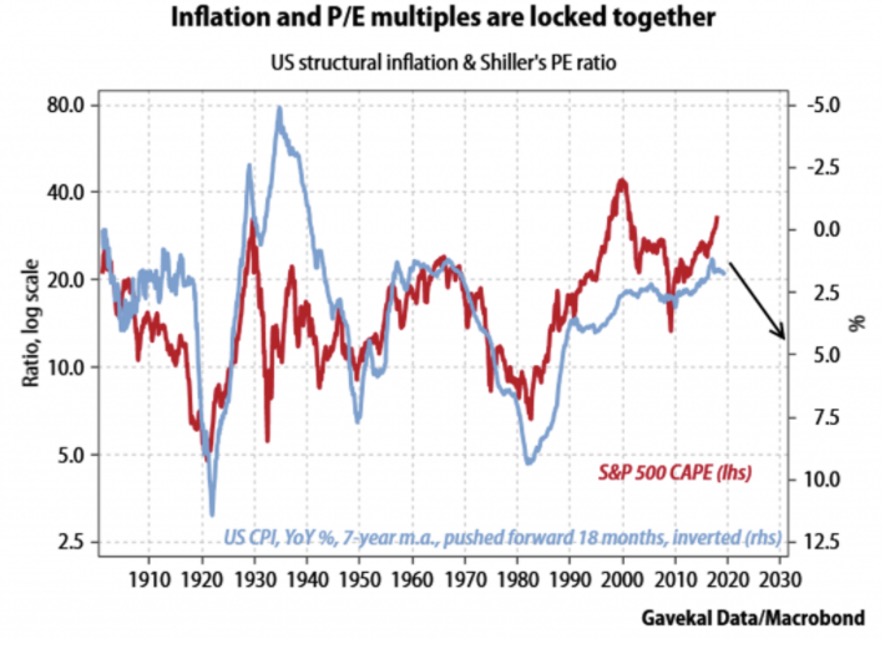
We enter the new year with Federal Reserve Chair Jerome Powell weighing up an earlier end to bond tapering and telling a Senate banking committee that it’s time to stop using the word “transitory” to describe inflation, implying inflation is indeed likely to persist for longer than many in the bond and equity markets had expected.
With that in mind, it is clear the evolving expectations around growth, inflation and bond yields have been impacting equity markets. In examining research compiled by Macquarie, it is clear that for Australian equity markets valuations have corrected by 18% in recent months when looking at the one year forward PE ratio of the market.
That is to suggest that while prices have been increasing, company earnings have been growing at an even faster rate consistent with the longer-term relationship between P/E ratios and inflation.

The core measure, which excludes the often-volatile categories of food and energy, has been climbing, leading to commentary throughout markets about the emerging threat of “stagflation”. Stagflation is a situation in which the inflation rate is high and increasing at a time when economic growth is falling with the threat of falling into a recession.
Historically a stagflationary environment has tended to weigh on stock performance. According to analysts at Goldman Sachs, the S&P 500's median real total return fell to a negative 2.1% per quarter over stagflationary periods in the last 60 years, compared with an overall median real total return of 2.5% per quarter over that time period.

Perhaps this threat is to an extent overblown given the above-trend global growth outlook and the lack of evidence of a wage-price spiral and high unemployment.
Everything from a shortage of workers, to rising energy costs, shipping delays to housing costs have all been very strong in recent times raising the stakes for the Federal Reserve whose all-important decisions on interest rates will be guided by their analysis on whether the recent jump in prices will prove temporary or lasting.
Over the long-term, the decline in unionised labour together with the advent of the age of automation have both acted as a weight on wage growth and in turn inflation.
As vaccination coverage proliferates, and international borders reopen, one would think a return of immigration will help ease some of the pressures in the labour market.
Without doubt COVID created a deflationary condition, whereby the initial shock hit demand greater than supply. Since then, the combination of the fiscal stimulus and reopening are creating the exact opposite condition, where demand is outstripping supply. We do however believe there’s a good chance supply will eventually catch up, particularly as demand begins to soften.
Over time we believe it’s likely that demand growth will subside once the artificial boost from fiscal and monetary stimulus subsides, returning us to a period for disinflation.
The impact of inflation on equities
Generally speaking, inflation is the enemy of equity investors. Yet as always with investing things tend to be more nuanced than that. Looking at historical data, small caps appear to provide a reasonable hedge against inflation when compared to large caps and corporate bonds, particularly when focusing on periods of high inflation.
Smaller companies tend to have more agile business models, enabling them to enact changes such as price increases that help them manage inflationary pressures.
It has been demonstrated that high-quality businesses with entrenched competitive advantages possess superior pricing power, allowing them to pass on change conditions in key inputs such as raw-material price increases, transportation cost increases, and increased labour costs better than larger, more cumbersome operations, and in a way that helps them better protect their bottom line.
Together with strong purchasing power, factors such as high operating margins and high returns on capital are also key business characteristics that should appeal to investors during periods of high inflation.
Operating margin is a measure of business efficiency. It essentially highlights what percentage of revenue earned remains in the business after expenses are accounted for. A growing operating margin signals improving economies of scale and greater profitability. But it also highlights a business’s ability to withstand rising expenses brought on by rising inflation.
A common trait among quality high growth businesses is that they exhibit high gross margins. Capital-light businesses with a competitive advantage and low levels of tangible assets typically have high margins.
Conversely, mature businesses with large tangible assets to maintain and numerous competitors offering substitute products often operate on slim margins, which in the event of an economic downturn or rising inflation can rapidly see profits evaporate as expenses rise.

Looking at the example above you see two businesses exhibiting different gross margins. In the first scenario, business A has a gross margin of 20%, while the second has a gross margin of 60%.
In the event of a highly inflationary environment such as in the second two, business B sees its expenses rise 13%. Business B experiences an even worse increase in expenses of 25%. Yet despite business B’s far superior margin compared with business A, its gross earnings only fall 17% versus a 50% decline in the earnings of business A.
Areas set to benefit from high inflation
According to research done by CME Group earlier this year, in an environment of supply shortages and strong consumer demand, small-cap stocks have been stronger performers than their large-cap peers during periods since 2010 when inflation expectations were rising. Comparing that with recent real-world outcomes and the thesis appears to be holding.
With news of strong inflation emanating through the markets in November, the Russell 2000 index of smaller stocks has advanced 5%, outpacing the S&P 500 large-cap benchmark’s 1.7% gain, aided by the fact that analysts continue to forecast steeper earnings growth from the Russell 2000 than the S&P 500 in coming quarters.
Despite rallying since April 2020, small caps remain at lower valuations compared to mid and large-cap companies and have received higher earnings-growth forecasts from analysts in the short term.
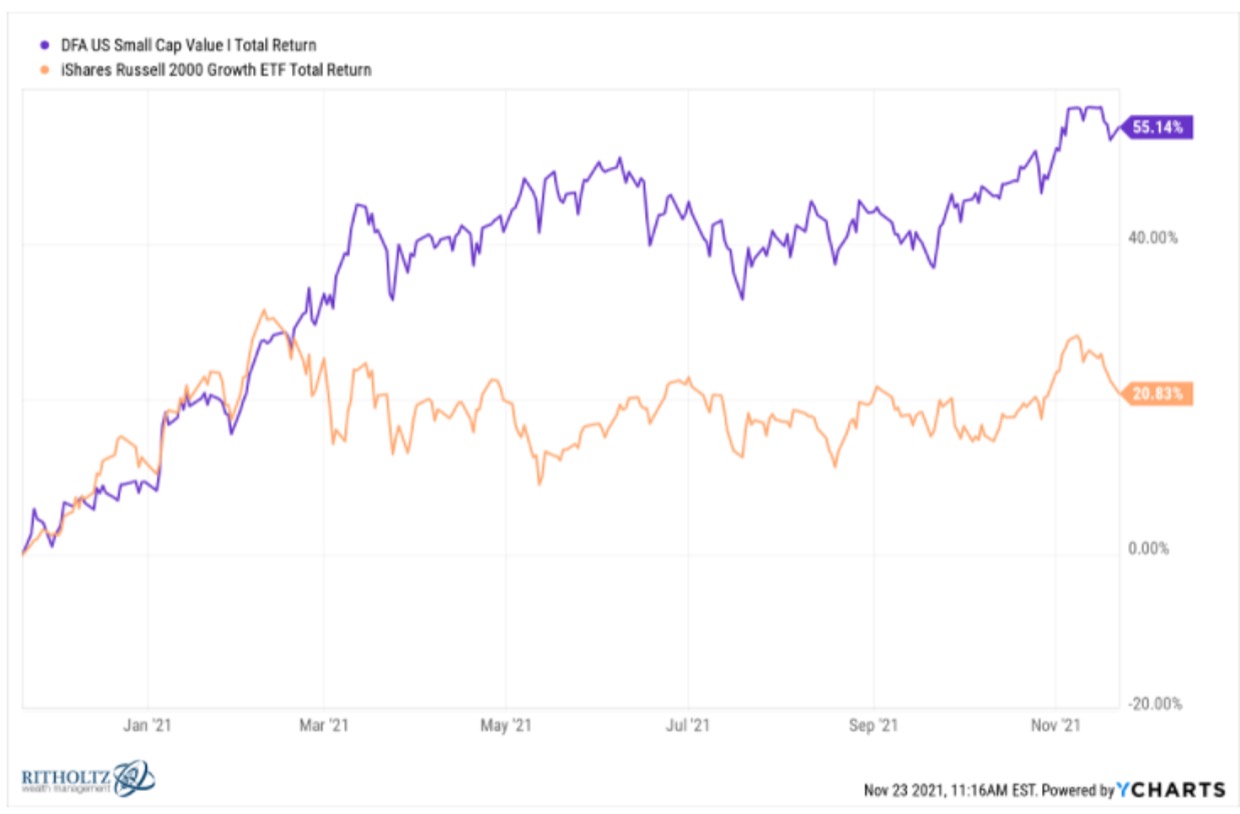
Historically, value stocks have performed better when inflation is higher while growth stocks have done better when inflation is lower. Value stocks are usually cyclical in nature and tend to have a domestic focus. Given value stocks by definition tend to trade on lower multiples they are likely to be less impacted by rising interest rates and bond yields.
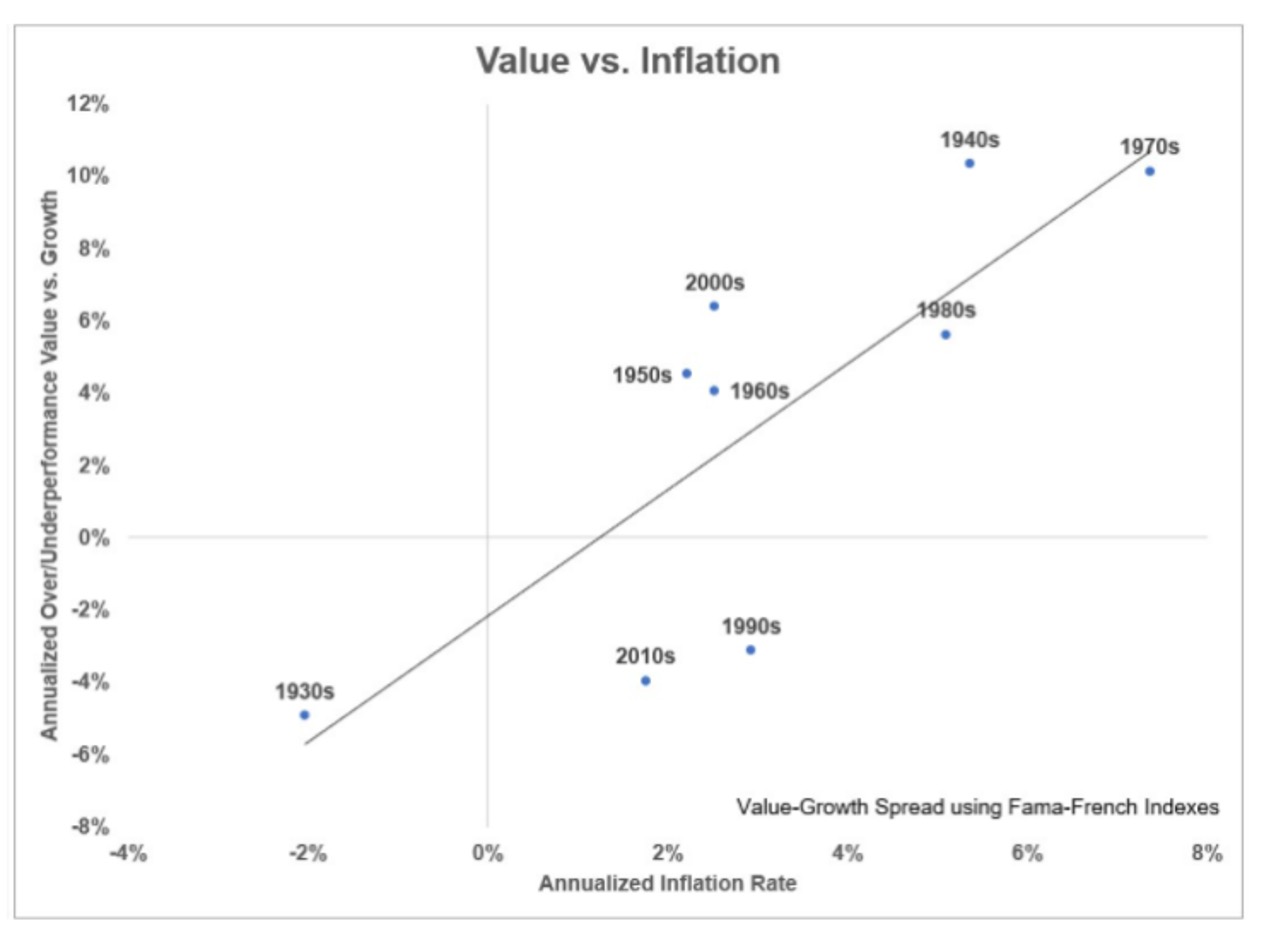
Historically, industrial commodities and precious metals have benefited from inflationary conditions. Arguably these are parts of the market that have experienced years of underinvestment and have comparably long production lead times before production and supply can be increased to meet demand.
Another area to keep an eye on is industrials involved in the distribution of equipment and other goods. Many of these businesses that serve a smaller, more fragmented customer base are better positioned to quickly pass along higher prices from their suppliers.

One stock to watch in 2022
As we enter 2022 one business that we think is well-positioned to prosper even in the event of an inflationary environment is a company called Raiz. Raiz is a micro-investing and new-age fintech platform with operations in Australia and Southeast Asia.
With Raiz, users are able to automatically invest the virtual spare change from their daily purchases into diversified portfolios. In Australia, this can be done to boost savings both inside and outside of superannuation.
Since launching in 2016, Raiz has achieved solid growth, amassing more than 2.2 million downloads, 2,135,000 signups, and over 550,000 active monthly customers with over $1 billion in funds under management, assisted in recent times by the working from home dynamic which has helped sharpen a focus and awareness of one’s finances.
In addition, the business has been experiencing strong revenue growth of 82% for the period to September 21, with an increasing portion of that being recurring revenue. The business has maintained a strong gross margin of 64% and kept a lid on customer acquisition costs at $14.84, a figure that’s the envy of traditional fund managers and superannuation funds alike.
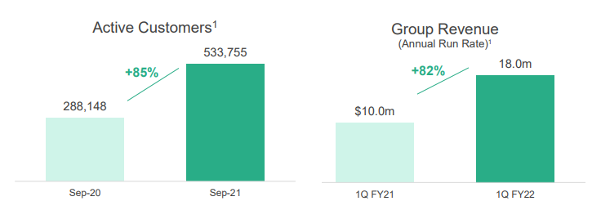
Source: Medallion Financial
Raiz continues to enhance its platform, adding 18 new products and features since its inception including a capacity to include bitcoin as a small percentage of portfolios. In addition, Raiz is ramping up its growth and literacy strategy across the Asia-Pacific region. The company’s foray into the Indonesian market appears well thought out, with the early signs pointing to considerable traction amongst the target market.
Although appearing to be a slightly peculiar target market for an Australian financial firm, Indonesia has a very large official population of 277 million, of which approximately 55 million are considered to be target customers for Raiz.
Aside from being a large potential customer base, the target population is smartphone savvy with each Indonesian having to an extent skipped the personal computer era and said to own on average 4 mobile phones per person compared with 1.5 for Australians, offering Raiz access to an engaged market from the position of a first mover.
With the markets arguably on edge and exhibiting elevated volatility, it is a worthwhile exercise to look back at the impact the COVID crash of early 2020 had on the business.
From February 2020 to March 2020 the platform lost 2.4% of its active customers, or 5245 customers in total. At the time, given the monthly platform fee of $2.50, that equated to $13,112.50 in lost revenue for that month.
In any case, given the netting spread (the cost to exit and enter funds) on Raiz investments of 0.5%, the business actually more than offset the lost revenue in the short term from those customers leaving the platform and the decline in management fees lost on those fund outflows.
Assuming an average account size of approximately $1,500.00, a 0.5% netting spread equates to about $7.50 in revenue per client or three months’ worth of account platform fees at $2.50. These are approximate calculations only but nevertheless highlight the inbuilt protection offered via the business model.
Pleasingly in the months since, aided by a high customer satisfaction rating and gratefulness for the assistance afforded by the Raiz platform, most if not all of those customers have returned.
Over the years the company has been able to steadily implement platform fee increases from $1.25 per month to $2.5 per month and now $3.5 per month, levels of growth that far exceed the minor growth experienced in customer acquisition costs.
Every time there’s a change in fee structure, the PDS needs to be updated and disseminated to all customers on the platform, helping to reengage those customers that may have become inactive.
Given the breadth of the customer base, this business doesn’t suffer from the same dynamics of a traditional fund manager where 70% of revenue can come from 30% of customers.
In addition, with account management fees of 0.275% making up only 18% of revenue, Raiz barely constitutes being a fund manager, and in our view is more of a savings platform helping people to accumulate funds through various reward partners, rather than being solely an investment platform.
We believe the potential impact of rising inflation on the business is unlikely to have much of a direct impact on customer willingness to invest. Through the rewards and rebate program, we believe this may actually be a tailwind for the business.
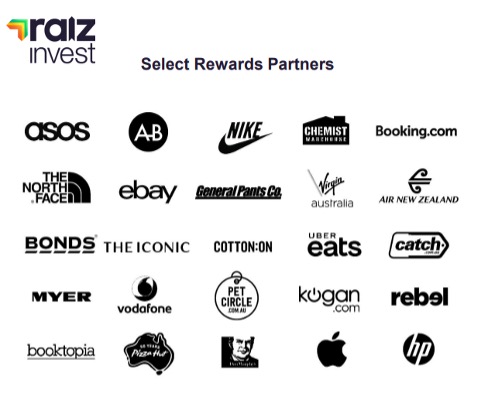
Through rewards and rebate programs customers are able to activate savings. As prices increase due to inflation, the opportunity for greater savings and cashback to be activated also rise. Hypothetically a 10% cashback on a greater number equals a greater saving for a user of the platform.
As prices rise people become more cost-conscious. Awareness of cashback deals increases as customers look to curb and offset those cost increases leading to the gamification of Raiz’s platform amongst users.
For example, a mother or father buying new underwear from Bonds, or new sporting equipment from Rebel, or a new pair of shoes from Nike, will be entitled to cashback from the retailer with every purchase, and as such be drawn to the saving benefits platform.
Herein lies the ability of the company to acquire customers at very attractive customer acquisition costs.
Through word-of-mouth at a playgroup or youth sporting match, or millennials sharing the news of their latest purchase from General Pants, word spreads about these savings mechanisms as well as the capacity to access the exciting world of financial markets and even cryptocurrencies through a new-age, easy to use smartphone application.
Never miss an insight
Enjoy this wire? Hit the ‘like’ button to let us know. Stay up to date with my content by hitting the ‘follow’ button below and you’ll be notified every time I post a wire.
Not already a Livewire member? Sign up today to get free access to investment ideas and strategies from Australia’s leading investors.
4 topics
1 stock mentioned